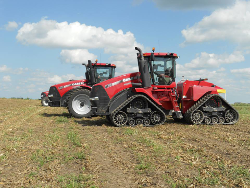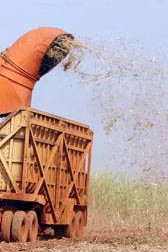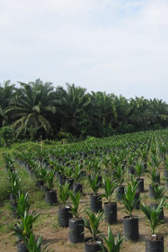|
October, 2014
|
|
Dear Friends and Partners,
|

|
Looking back on this year´s agri benchmark Cash Crop Conference I´m very pleased how much progress we made. Because of new partnerships with colleagues from Sub-Saharan Africa our network now covers all important crops and the main agricultural production systems in all major parts of the world – just India is (still) missing...
|
|
| Two illustrative examples of our results are highlighted in this newsletter: You’ll find first hand information on why palm oil is so competitive vs. soy oil and on how sugar cane and sugar beet compare. |
Yelto Zimmer
Coordinator of agri benchmark Cash Crop Network
|
|
Cash Crop Conference 2014
|

|
Bill Northey, Iowa Secretary of Agriculture opened the agri benchmark Cash Crop Conference 2014, which took place in Iowa, USA. He emphasized the need for solid and in-depth understanding of global agricultural production systems and their economics.
|
|
| Profitability of crop production in general was still okay for most countries, however compared to 2012 a downward trend could be observed already. Contrary to this general finding, typical corn producing farms in the US, France and Brazil already in 2013 have been not able to cover total cost. In Brazil a reduction in corn acreage and an increase in soybean will most likely be the consequence. |
| Regarding the US it appeared that current low corn prices are likely to cause a further expansion of ethanol – even without government support. |
» Press release Cash Crop Conference 2014
(English)
|
» Pressemitteilung Cash Crop Conference 2014
(German)
|
| » Public Documents of the Cash Crop Conference 2014
|
You find this newsletter a valuable source of information? Then please recommend our newsletter to colleagues and friends.

|
Exclusive results from Cash Crop Conference 2014:
Beets and cane - same level in cost of production
|

|
The “take home message” of the first truly global agri benchmark sugar session is that raw material production based on EU sugar beets seems to be rather competitive compared to sugar cane in typical farms in Brazil, Thailand and South Africa. Direct and operating costs for sugar beet are higher on a per hectare basis.
|
|
| Brazilian cane farms are the cost leader on a per ton basis with 180 USD/t, compared to around 200 UDS/t for European farms and more than 300 UDS/t for farms in Thailand and South Africa. However, this is only half of the story, because we still have to work on cost of processing. |
| And most likely this is what makes the difference: cane can be processed more or less
year round while beet processing is only done for 3 to 4 month. And: while beet processing
uses a lot of purchased fossile energy, converting cane to sugar is even a net energy “production”.
Modern mills are not only able to run the conversion on by-products from cane but additionally
generate electric power which is transferred to the grid.
|
Palm oil - an extremely competitive commodity
|

|
As the demand for vegetable oil is growing fast and palm oil outperforms all other vegetable oils agri benchmark did a study about the economics of palm oil production in Malaysia compared to soybean oil produced in the US. Specifics of palm oil production are the high up-front investment in annual crop establishment (approximately 10.000 USD/ha) and 20-25 years depreciation for crop establishment investment.
|
|
| Furthermore, no revenues are brought in during the first 3 years and the lock-in effect once the investment has been made is huge. But the high investments in palm oil establishment are nearly insignificant on a per ton cost basis. While fertilizer costs are on a comparative level between palm oil and soybean production, there is a clear advantage for palm oil in seed and plant protection costs. |
| On the other hand labor costs are higher in palm oil (labor input is around 110 hours/ha) than in soybeans but there are almost no machinery and diesel costs. Land costs make the difference. In summary, the total net raw material cost needed to produce a tonne of vegetable oil in the US are currently at around 450 USD. The figure for Malaysia is only 150 UDS/t. The conclusion: Even though soybean oil receives a premium of 60 - 80 USD/t, palm oil is an extremely competitive product. |
| » Palm oil - Economics of the driver of global vegetable oil markets(pdf, 1080 KB) |
agri benchmark in the media
|
Why are US typical farms not first regarding highest profit margin in a cross-country comparison?
“High land rents account for about half of U.S. soybean costs, almost equal to direct, operating and other costs combined”. This quotation and further answers are published in an article about the agri benchmark Global Forum by the US magazine “Progressive Farmer” |
» Land costs hamper US competitiveness
DTN, The Progressive Farmer | |
| Publications of some agri benchmark partners emphasize country specific aspects of the conference findings. |
» Cash Crop Conference 2014 - Peter Borreby, Patriotisk Selskab, Denmark
(article in Danish) | |
» Global agricultural economists - UCAB, Ukraine
(article in English) | |